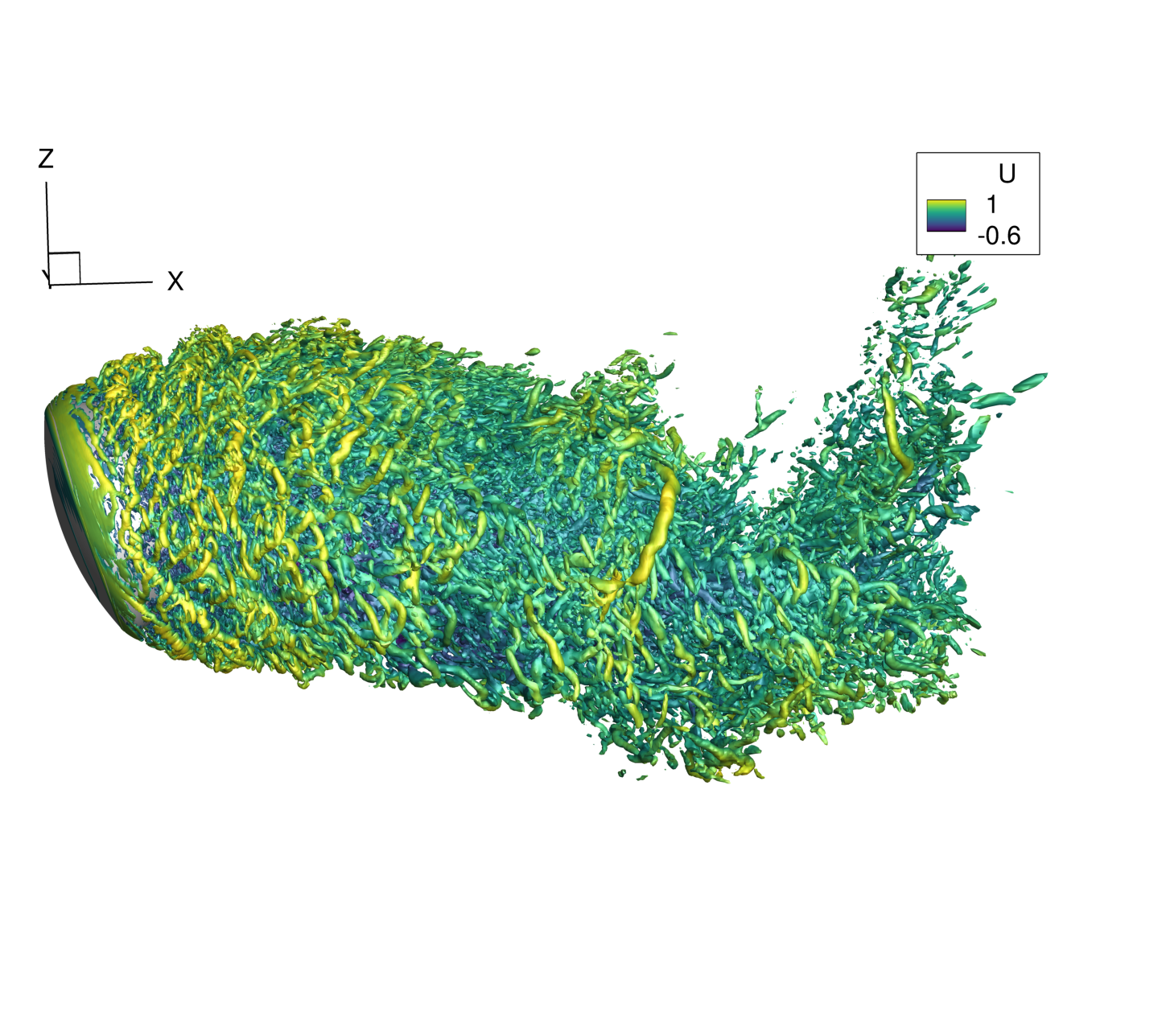Physics of Dynamic Instability on Lift-type Reentry Capsule at Subsonic Flow
JAXA Supercomputer System Annual Report February 2024-January 2025
Report Number: R24EFHC0312
Subject Category: Common Business
- Responsible Representative: Naofumi Ohnishi, Professor, Depertment of Aerospace Engineering, Tohoku University
- Contact Information: Yasuhito Okano, Aerospace Exploration Agency(okano.yasuhito@jaxa.jp)
- Members: Naofumi Ohnishi, Yasuhito Okano
Abstract
A reentry capsule is known to cause dynamic instability at subsonic, transonic, and supersonic flows. To conduct an appropriate control for it, elucidation of mechanism on the dynamic instability is needed. Previous studies revealed that the characteristics of the oscillation are different depending on the freestream velocity. The mechanism of the dynamic instability at supersonic flow was clarified in our past research. On the other hand, it is difficult to reproduce an experimental result by numerical simulation at subsonic flow. In this study, a large-scale numerical simulation with about 300 million grid points is performed to try to elucidate the mechanism of the dynamic instabilities at subsonic flow.
Reference URL
N/A
Reasons and benefits of using JAXA Supercomputer System
Accurate prediction of capsule motion requires high-quality resolution of the flow around the capsule. It takes approximately 150 flow-through times to calculate one cycle of capsule motion, and several cycles of data are required to analyze the results. Performing such computationally expensive numerical simulations with a grid that consists of 300 million points is challenging even in the current computing environment. Therefore, the use of a supercomputer is essential.
Achievements of the Year
Dynamic instability of a HRV-type capsule which is a lift-type re-entry capsule at subsonic flow was investigated. The freestream Mach number and Reynolds number were 0.7 and 1.93*10^6, respectively. Spatial accuracy was enhanced by fifth-order interpolation, and temporal accuracy was second-order. Numerical simulations were carried out on two computational grids which consist of approximately 300 million and 40 million grid points, respectively. The isosurface of the Q-criterion colored by x-direction velocity is shown in Fig. 1. The pitch angle is -4 deg from a trim angle. The flow is separated at the shoulder, and the shear layer collapses and transitions to turbulence. The time history of the pitch angle is shown in Fig. 2. The oscillation amplitude is not so different for both grids (Fig. 2). In order to investigate the characteristics of the dynamic instability, the work exerted by the flow was evaluated for each part of the capsule. Consequently, it was revealed that the work exerted by the flow on the upper side of the capsule and at the base has a significant influence on the dynamic instability at subsonic flow. This characteristic is different from the one at supersonic flow. The contribution of the results to the related community is significant.

Fig.2: Time history of pitch angle obtained with computational grids which consist of 300 million points and 40 million points.
Publications
- Peer-reviewed papers
Yasuhito Okano, Shintaro Sato, Hiroki Nagai, and Naofumi Ohnishi, Dynamic instability in lift-type reentry capsule at supersonic flow, Physics of Fluids, Vol. 36, No. 7, 2024, Paper 076135.
- Non peer-reviewed papers
Yasuhito Okano, Shintaro Sato, Naofumi Ohnishi, and Hiroki Nagai, H, Numerical Study of Dynamic Instability in Lift-Type Reentry Capsule at Transonic Flow, AIAA Paper No. 2024-4527, 2024.
- Oral Presentations
Yasuhito Okano, Shintaro Sato, Naofumi Ohnishi, and Hiroki Nagai, H, Numerical Study of Dynamic Instability in Lift-Type Reentry Capsule at Transonic Flow, AIAA 2024 Aviation Forum, Las Vegas, August 2024.
Usage of JSS
Computational Information
- Process Parallelization Methods: MPI
- Thread Parallelization Methods: N/A
- Number of Processes: 720 - 7200
- Elapsed Time per Case: 360 Hour(s)
JSS3 Resources Used
Fraction of Usage in Total Resources*1(%): 0.08
Details
Please refer to System Configuration of JSS3 for the system configuration and major specifications of JSS3.
| System Name | CPU Resources Used(Core x Hours) | Fraction of Usage*2(%) |
|---|---|---|
| TOKI-SORA | 1985313.61 | 0.09 |
| TOKI-ST | 23611.16 | 0.02 |
| TOKI-GP | 0.00 | 0.00 |
| TOKI-XM | 0.00 | 0.00 |
| TOKI-LM | 0.00 | 0.00 |
| TOKI-TST | 0.00 | 0.00 |
| TOKI-TGP | 0.00 | 0.00 |
| TOKI-TLM | 0.00 | 0.00 |
| File System Name | Storage Assigned(GiB) | Fraction of Usage*2(%) |
|---|---|---|
| /home | 0.00 | 0.00 |
| /data and /data2 | 10206.67 | 0.05 |
| /ssd | 0.00 | 0.00 |
| Archiver Name | Storage Used(TiB) | Fraction of Usage*2(%) |
|---|---|---|
| J-SPACE | 6.85 | 0.02 |
*1: Fraction of Usage in Total Resources: Weighted average of three resource types (Computing, File System, and Archiver).
*2: Fraction of Usage:Percentage of usage relative to each resource used in one year.
ISV Software Licenses Used
| ISV Software Licenses Used(Hours) | Fraction of Usage*2(%) | |
|---|---|---|
| ISV Software Licenses(Total) | 0.00 | 0.00 |
*2: Fraction of Usage:Percentage of usage relative to each resource used in one year.
JAXA Supercomputer System Annual Report February 2024-January 2025



